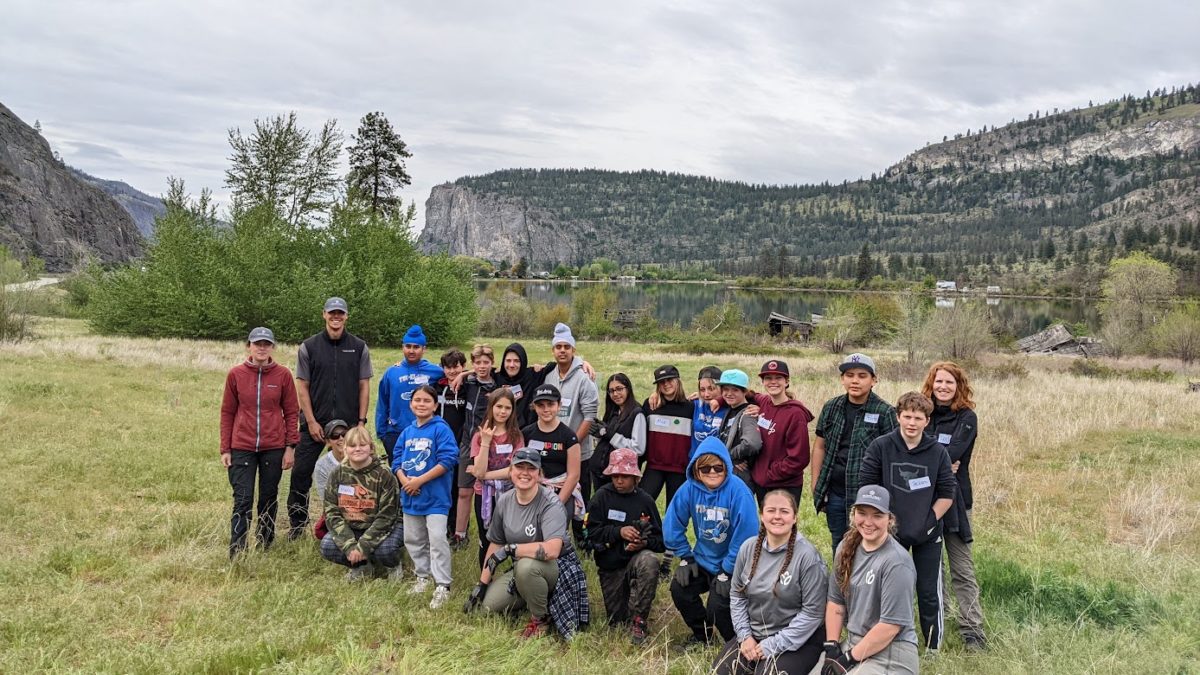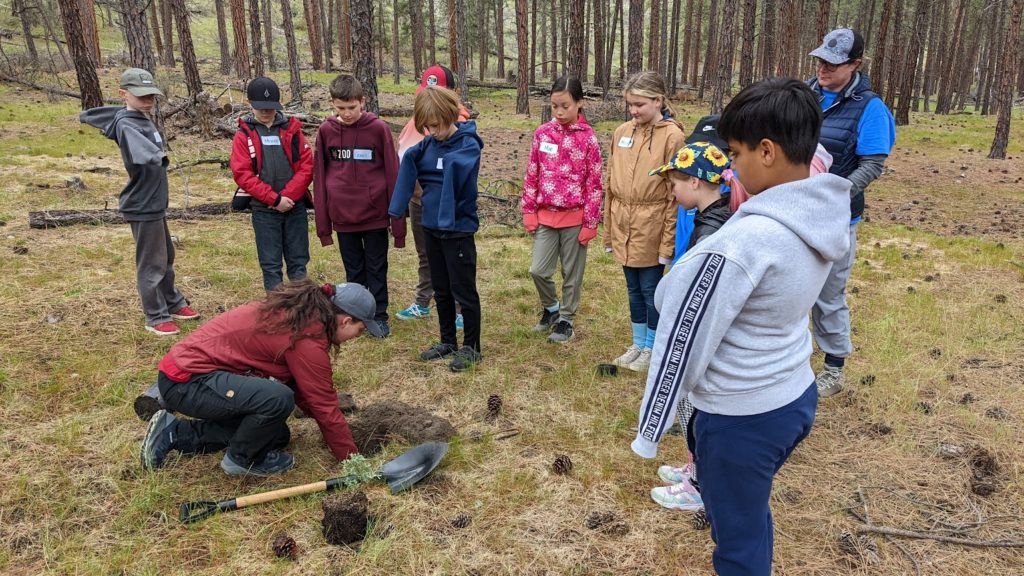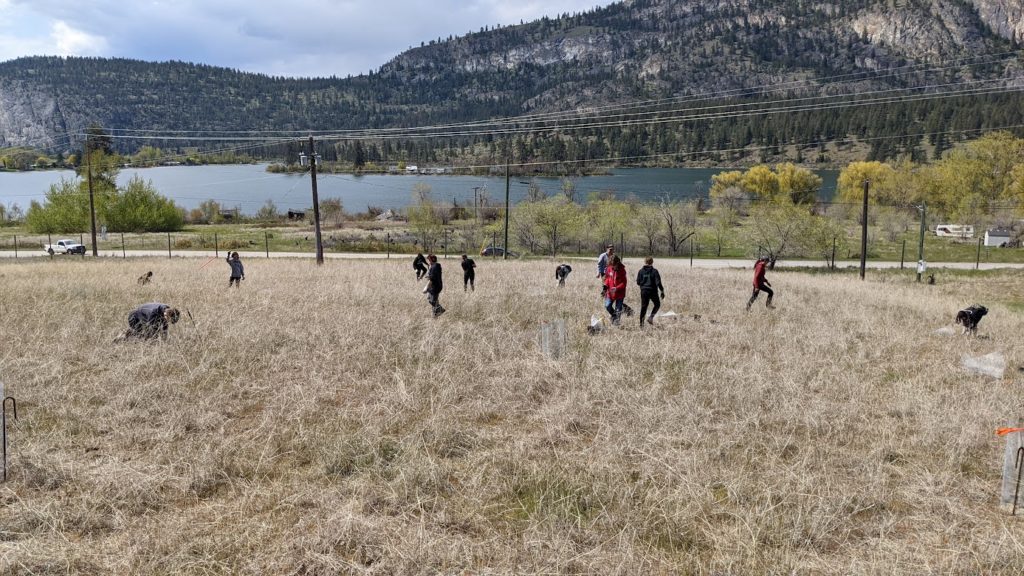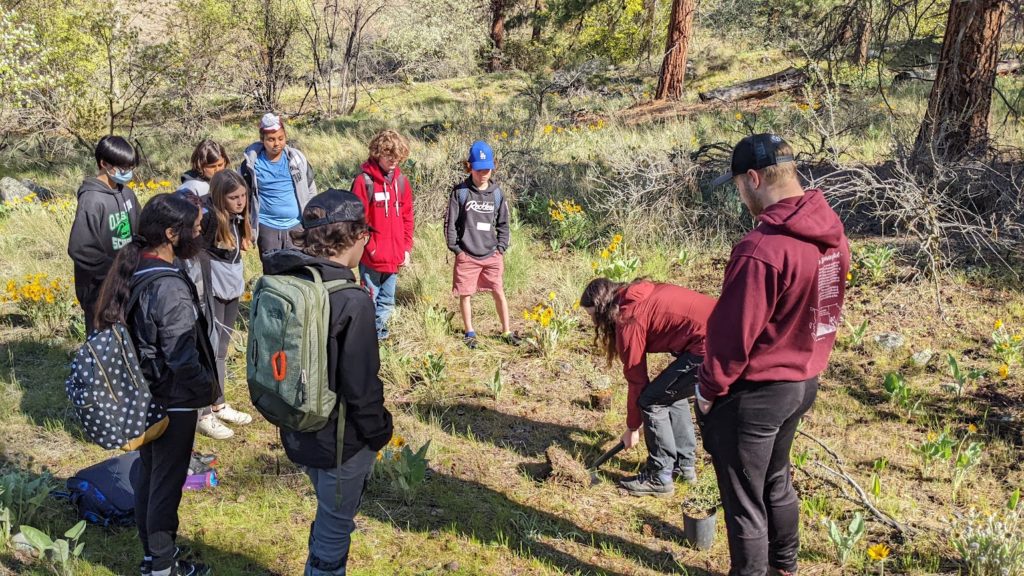
Conservation means we must always look toward the future – making sure that we can care for the land and ecosystems in perpetuity. One of the very best ways to ensure this is to teach the next generation to also care for the land. That is why our Okanagan Conservation Field Crew joined forces with schools from the Okanagan Similkameen School District to spend some time in one of the most endangered ecosystems in the province.
Students from a local schools visited our Antelope-brush Conservation Area throughout the spring to learn about conservation and to help take care of the land. These young people learned about local wildlife, endangered species, animal tracking, and Indigenous perspectives on place. They also helped out the crew by doing restoration work such as planting seedlings and setting up wildlife cameras.

This initiative was in collaboration with a number of local conservation organizations, including The Nature Trust of BC, Osoyoos Desert Society, Okanagan and Similkameen Invasive Species Society and the South Okanagan Conservation Fund, among others.
“Our goals were to help students learn more about this critically endangered [Antelope Brush] ecosystem, and also to provide them with a meaningful, hands-on way for them to be part of the solution,” said project organizer Allison Dietrich in a video on the program. Dietrich said that this approach to education provided a more holistic, rounded experience learning about Antelope-brush ecosystems, and students were inclined to agree.
“I liked planting the Antelope-brush because I knew that I was helping the ecosystem and it was something good for the environment,” said one participant.

This kind of initiative is especially important in the context of Antelope-brush ecosystems because this type of ecosystem is critically endangered in Canada and one of the most threatened types in the province. It is characterized by grassland steppe terrain covered in gnarled Antelope-brush plants. These grasslands contain over 40 federally-listed at-risk species, including the Behr’s Hairsteak butterfly, the Pallid Bat and the Desert Nightsnake, all of which are provincially Red-Listed.
Antelope-brush ecosystems also represent a uniquely British Columbian conservation story. The Antelope-brush species thrives in soil derived from windblown sand deposited by Ice Age glacial meltwater, which is scattered across Western Canada and the United States. According to the Okanagan Similkameen Conservation Alliance, 68% of South Okanagan Antelope-brush habitat has been destroyed since 1938, making its restoration critical.
The organizers of this program hope that by engaging productively with an Antelope-brush ecosystem as children, these students will gain a new appreciation for critically imperiled biodiversity and the work that goes into restoring it. The statements of the participants themselves seem to indicate that this project is having the desired effect.

This initiative was a pilot project by the Okanagan Similkameen School District. Our team at The Nature Trust greatly enjoyed spending time with these young conservationists.
